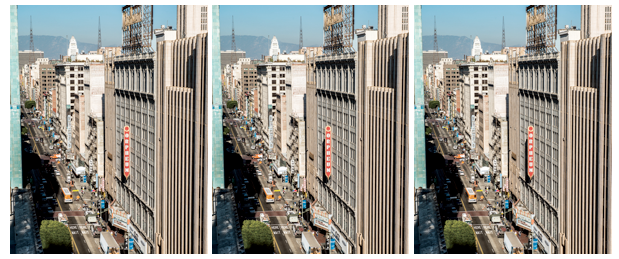ONE PERSPECTIVE-Brady Westwater stands on the corner of Spring Street and Fifth Street, Downtown Los Angeles, arms akimbo. He wears a crumpled black cowboy hat pinned up on one side and a hooded sweatshirt of the Elida (Ohio) High School wrestling team. The squad on the sweatshirt changes daily, but this is essentially his uniform.
“This was the Wild West before there was a Wild West,” he says, all but wading into traffic and gesturing to the buildings around him. “In fact, many people went east from here to make the Wild West. This was wilder than any cow town in Texas.” The buildings on all four corners, he says, were built by a confederate of Wyatt Earp, who spent some time as an Angeleno in the early 1900s.
“The whole history of this neighborhood is a series of frontiers!”
With his hat, wiry arms, and scruffy mustache, 65-year-old Westwater bears some resemblance to a gold-panning frontier sidekick himself. He remembers when Fifth Street, “the Nickel,” had the distinction of being one of the busiest drug markets in the world, when the only places to get something to eat were the gas station on Olympic and the twenty-four-hour Original Pantry Cafe on Figueroa, where you can still get home fries with an archaeological mantle of crust. Back then, you could hang around and eventually see all the Downtown pioneers—artists, filmmakers, assorted bohemians—as they climbed out of their lofts and warehouses in search of sustenance.
(“I was one of the many people Brett Martin interviewed for his GQ article on Downtown LA and of all the many writers I have spoken with, he has gotten the best grasp on what is new - and unique - about the path Downtown LA has taken.” – Brady Westwater)
Westwater, as he tells it, abandoned Downtown for a while, like most everybody else. He lived in Malibu and traveled the world as a mixed-martial-arts fighter.
Then, in 1997, he came back, possessed of a vision of a revitalized urban community occupying Downtown. “I pushed flyers under every door I could find that showed a sign of life,” he says of his mission to match empty spaces with sometimes reluctant new tenants.
He wasn't alone. Developers—names like Tom Gilmore and Cedd Moses—were set to begin taking advantage of a new law that loosened regulations on how Downtown's vacant buildings could be developed. Now, charging up the street to Broadway, Westwater points to building after building that has come back to teeming life: This one is lofts. This one houses one of the city's best restaurants.
This one is a bar with a pop-up restaurant in the back and a performance space on top of that. Every structure seems to house artists, musicians, designers, tech developers, chefs—the whole Who are the people in your neighborhood of the creative class.
After decades of being all but forgotten, Downtown has approached a critical mass of cool that even the most hard-core resident of Venice or Santa Monica or West Hollywood or Silver Lake would find impossible to deny.
“And we're still at the tip of the iceberg,” says Moses, whose Downtown bars have done as much as anything to spur on the development. “Right now, Downtown is like Brooklyn, but that's going to change. This is going to be Manhattan. And all the outlying areas, the rest of Los Angeles, that's going to be the boroughs. I don't have a doubt in my mind.”
Westwater, who both leads tours of Downtown and pops up in meetings with developers and politicians, is somehow in the center of this frenzy of activity—something between a fixer, a booster, a town historian, and the local eccentric, part Boss Tweed, part Joe Gould. In other words, the kind of great character produced by great cities. And that, of all things, is what Downtown LA is trying to become: a Great City in the heart of the City That Destroyed Cities.
(Read the rest … including why Brett Martin believes his ‘next great city’ claim … here)
-cw
CityWatch
Vol 12 Issue 3
Pub: Jan 10, 2014





